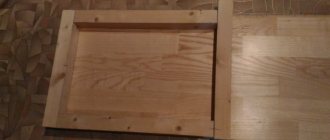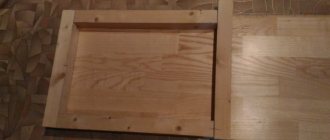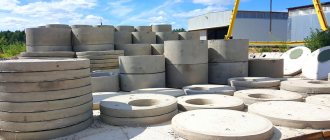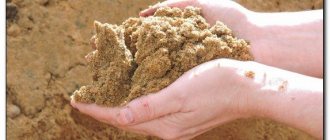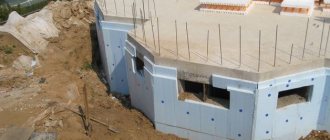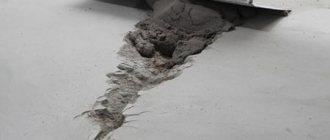The loss of a loved one is not only a tragedy, but also a lot of trouble. Grieving relatives, even after death, want to give the person the best: they choose a beautiful monument, a good place in the cemetery, they want to arrange the burial beautifully.
However, many people forget about the main thing: a monument is a massive structure that needs a reliable foundation. And durability will depend on the quality of the foundation. A monument is a kind of house where memories of a person are stored and, like any other house, it needs a foundation.
People often complain that craftsmen promise them reliability for many years when installing a monument, but within a couple of years the structure tilts, shifts, or even falls and splits. As a result, the money is spent, devastation reigns at the grave, and all trust in the masters is lost. What to do in such a situation?
Such problems with monuments are very common if a strong and durable foundation was not made during installation. Ritual slabs are the optimal solution to this issue, but, unfortunately, many people do not know what they are. It is advisable to strengthen the burial immediately, but even if the monument was initially installed poorly, slabs for the monument will allow you to quickly correct the situation.
Foundation for a monument? Ritual slabs or paving slabs?
A kind of “bonus” of any loss is the hassle of preparing and organizing the funeral and subsequent efforts to improve the grave.
The monument acts as a “measure” of the veneration and respect of the deceased - it is not for nothing that the design comes from the word “memory”. Just installing a beautiful stele is not enough; you need to constantly monitor the condition of the structure, weed out the grass, and straighten the crumbling soil. But upon arrival at the grave, you want to honor the memory of a relative, talk with the soul of your loved one, and not visit the burial place only for improvement.
To make their work easier, for many years now a heavy stele has been mounted on a stand, which is placed on a pre-prepared foundation. In order to minimize vegetation and subsequently create paving slabs in the area, some relatives fill the area with concrete mixture. For some time, this solution to improving the burial site was considered the only possible option. But not now.
With the advent of ritual slabs, the need to install a foundation disappeared. The structure is also made of reinforced concrete, is stable - it is laid on lintels, can withstand enormous weight, does not crack, has a decorative pattern identical to the texture and style of paving slabs and is installed in just two hours!
What problems are encountered after standard burial improvement?
- If you do not wait for the earth to settle, the installed monument will skewer in 99% of cases, since the foundation will shrink unevenly.
- The laid paving slabs will also crack and partially fall into the ground.
- Weeds are a concomitant phenomenon of burials arranged using old technologies. Even geotextiles and paving slabs will not protect you from unnecessary vegetation, since soil and weed seeds can accumulate in the seams.
- Incorrect technology for installing structures leads to the destruction of the monument and the subsequent need for complete reconstruction.
Such problems will probably not affect the relatives of the deceased if they give preference to modified ritual slabs, which displace old methods of decorating graves.
What are ritual slabs?
Ritual slabs are monolithic slabs made of reinforced concrete - concrete with a reinforced frame to prevent destruction and defects of the slab. Products are produced by pouring high grade cement into special molds. Some design models are made from a solution of cement and plasticizers without the use of a mesh frame.
The standard kit for the improvement of one grave consists of two independent slabs measuring 1.9 by 1.45/1.25 meters and three foundation lintels.
It is possible to arrange family burials with a large number of graves.
The installation process of the slabs takes only two hours. For these purposes, a team from the funeral company with all the necessary equipment comes to the burial site, levels the area, levels the beams or foundation lintels (two are located at the edges, the third in the center), then the ritual slabs are laid symmetrically, under which geotextiles and polyethylene are laid in advance film. To complete the improvement, a stand is mounted and a stele is installed. Flowers are planted in the flower garden, and the edges of the slabs are covered with fine-grained granite crushed stone and marble chips.
Advantages
Ritual slabs appeared relatively recently, but over a short period of operation they have become in demand and relevant for the construction of both old and new burials. Among the main advantages of the design it is worth noting:
- durability – a good brand of cement guarantees the reliability and durability of the structure;
- durability - a well-thought-out and proven production technology tacitly confirms the durability and strength of the slabs, which serve in all weather conditions for many decades;
- there is no stagnation of water - the slabs are installed on lintels, due to which they are raised above the ground in the range of 15-20 cm;
- no weeds - thanks to the absence of seams (the slab is monolithic) and pre-spread geotextiles, you can forget about constant cleaning of the grave;
- reliability - the monument is installed on slabs and fixed on all sides, which guarantees the absolute stability of the stele for many years;
- slabs can be added or moved without losing their quality and appearance;
- The surface of the tiles does not slip, looks identical to its paving counterpart and can be installed in just a couple of hours!
In addition to the classic options for paving slabs, there are many sets with original, individual sizes and non-standard colors.
What to choose: a regular foundation or ritual slabs?
Paving slabs outperform both paving slabs and foundations in all respects. 1. The cost of the kit is significantly lower than similar methods of burial improvement.
2. The installation time of the structure is only 2 hours! The construction of the sidewalk takes away a whole working day from the funeral company crew.
3. Durability – products made from monolithic concrete last for decades! Paving slabs or foundations can become unusable within a year.
4. Ritual slabs can be used to decorate both old and new burials. For comparison: it is recommended to pour the foundation for a monument only a year after the funeral.
Why is it better to contact our company?
Our company is a major dealer in the capital and carries out the production and installation of monuments of various configurations and designs. We offer not only high-quality and durable slabs for arranging burials, but also competitive prices for our services. For the attention of interested customers, economy class kits with and without a cutout for a flower bed, slabs made to individual sizes, free design of the monument, discounts of up to 30% and higher, a surveyor’s visit and many, many other offers.
You can find out more detailed information about promotions on our company’s website at https://ritual slabs.rf/.
The memory of the deceased should not fade and dissolve over time... A well-maintained grave is the main confirmation that the deceased is loved and honored.
Society for the Protection of Consumer Rights on Social Media:
Variety of species
The slab for the grave can be of different colors and shades. The most relevant, of course, is black. But there is also an option to make them brighter. For example, gray shades, brown, red or even green. With us you can choose absolutely any color.
The size of a memorial plaque for a grave depends on the manufacturing option and the size of the grave itself. But mostly standard slabs are made, because the area is limited. There are options for tombstones that partially cover the burial site, leaving part of the land for growing a flower garden. Some completely cover the grave. This allows you to spend less time refining it.
Regarding the shape of tombstones, they are completely different. Usually they are square or rectangular. But they can also be made round, trapezoidal, or made in the same style as the monument. They may contain various elements, such as an angel, a cross or a vase.
Instructions for installation of ritual paving slabs and monument installation
An alternative to paving slabs when decorating a recent burial are ritual paving slabs. Installation of a monument on a grave, arrangement of a flower bed and decorative covering, as a rule, is carried out after the soil has settled. The use of ritual slabs made of high-strength concrete allows you to improve the area on the day of the burial.
Benefits of using ritual paving slabs
Durability. Monolithic concrete slabs are made by vibration casting. Service life more than 30 years. For production, grade 500 cement without impurities, granite screenings and alluvial sand are used. Reinforcement of the structure with synthetic fiber fiber and metal welded mesh eliminates the formation of cracks and deformations in the slab mass during operation.
Installation speed. The technology of laying a monolithic coating on reinforced concrete lintels allows you to begin work immediately after burial. If you have a set of materials, a level and a shovel, the installation of ritual paving slabs with the installation of a monument is carried out by two people in a maximum of three hours. The duration of the work depends on the size of the site and the number of slabs.
Aesthetic appearance. A minimum of seams and joints between large slabs reduces the possibility of distortions, uneven subsidence, weed growth and debris accumulation. A clear pattern that imitates brickwork ensures the removal of precipitation from the surface of the complex. The ritual paving slabs and the monument acquire color during the mixing of the concrete mixture, so it does not fade in the sun and is not washed off by rain.
Operation and care. The ritual complex is installed on a layer of geotextile, which allows water to pass through but does not allow grass to grow. The flat surface makes it easier to remove fallen leaves in autumn and snowdrifts in winter. The durable monolithic construction of ritual paving slabs does not require special care and lasts a long time without replacement or restoration.
Saving. The cost of a ritual complex with paving slabs and the cost of its installation are significantly lower than similar work using traditional materials.
Instructions for installing ritual paving slabs
To carry out the work you will need:
- installation kit, which includes one or more paving slabs and foundation lintels of certain sizes;
- geotextile fabric covering the area of the site;
- sand for backfilling trenches under foundation blocks;
- straightening plates to eliminate the gap between the slab and the lintel;
- tools: bayonet and shovel, level, tape measure.
Stages of installation of paving slabs for the ritual complex:
Preparatory. Visually determine the location of the work. Temporary structures are dismantled. Debris and large plantings are removed from the site.
Marking the territory. Using a tape measure, mark the boundaries of the site. Paving slabs should lie along the burial. Pegs are driven into the corners of the site, and string is pulled between them. If the diagonals of the rectangle are equal, then the angles are right and the markings are done correctly.
Site preparation. The plant layer of soil is removed from the surface and the area is leveled. Mark the locations for laying the foundation lintels. To do this, landmarks are laid across the grave along the axis of the site and at equal distances from it, closer to the edges.
Determining the size of trenches for the foundation. According to the selected configuration, a trench is dug for the foundation blocks with a cross-section of 160x140 mm, and the bottom of the trench is compacted with a layer of sand 4–5 cm thick. Depending on the number of paving slabs, the length of the foundation lintel can be 1000–2800 mm. Two 1 m long lintels are placed under a single “Economy” type slab. The standard set of the “Brick” series includes 3 foundation blocks of 1.2 m each.
Laying foundation lintels. Reinforced concrete lintels are placed strictly level on a stable sand cushion 2 cm above the zero ground level. The blocks must rest on soil that was not disturbed during burial. The construction level is used to check the extreme points and center lines of all jumpers and check the diagonal lengths. If necessary, adjust the installation height of the foundation blocks, add sand or remove excess sand.
Installation of ritual slabs. The area of the site is lined with geotextiles, which prevents the germination of weeds. Paving slabs are installed on the foundation lintels along the grave. Possible play is eliminated using straightening plates.
Upgrading of the ritual complex
The procedure for installing the monument:
- on the flat surface of the paving slabs, mark the dimensions of the flower bed with the base of the monument;
- a layer of cement mortar is laid according to the landmarks and the base of the monument with the frame of the flower bed is installed;
- excess mortar is removed and the seams are rubbed down;
- the installation hole of the base is filled with cement mortar;
- the stele is lowered onto wooden supports, which are removed one by one;
- check the vertical level and symmetry of the installation of the monument;
- The joining seam is wiped with a rag.
After installing the monument, a sand-gravel mixture is added around the perimeter of the ritual complex. The frame of the flower bed is filled with fertile soil and plants are planted. Low-growing perennial species that are resistant to temperature changes, dry periods and harsh winters are suitable for these purposes.
Options for laying ritual paving slabs
The installation of monuments in a cemetery depends on the size of the plot. The different design of the longitudinal edge of the paving slabs allows you to choose the installation option for a specific area. A set of covering elements of the “Brick” series can be compiled for a ritual complex with one or two monuments from slabs of standard sizes 1850x600 mm:
Granite tombstones
produces standard and exclusive natural stone monuments. One of the elements of the monument is a granite tombstone, which covers the grave completely or partially. The simplest product has a rectangular shape with an aspect ratio of two to one. Its thickness varies from 30 to 80 mm; slabs are most common.
Photo 1. Granite tombstone
There are other options for the design of the horizontal part of the tombstone. The company produces standard and custom-made shaped parts in a specialized workshop. Particularly popular are slabs made of natural material, two sides of which are straight, and the third is wavy. Two such products placed with a gap leave a beautifully curved gap in the flower garden, filled with small crushed stone or soil for planting ornamental plants.
Anti-shrinkage plates
Showing all 6 elements
Anti-shrinkage plates “Double Brick”
Anti-shrinkage plates “Brick”
Anti-shrinkage plates “Cage”
Anti-shrinkage plates “Tile”
Anti-shrinkage plates “Pattern”
Anti-shrinkage slabs “Polished mosaic brick”
Why are anti-shrinkage plates needed?
Installation of monuments is always carried out directly on the ground. But due to the heavy weight of concrete, marble or granite slabs, the soil tends to sag over time. To prevent such a natural phenomenon, anti-shrinkage plates are used. The product has a large area, which reduces the load on the soil by distributing the weight evenly over the entire surface of the burial area. In addition, such slabs guarantee the complete absence of distortion of the monument.
What is an anti-shrinkage plate
The structure is a solid cast concrete or reinforced concrete slab of established dimensions. There may be a cutout at the base of the product, which is designed to drain accumulated moisture into the ground or to install a flower bed. To improve their appearance, the slabs can have decorative finishes - all kinds of patterns.
In the production of anti-shrink slabs, manufacturers adhere to certain standards aimed at the durability and strength of the finished structure. In particular, the minimum thickness of the slab should be 6 centimeters. And in manufacturing, to enhance the rigidity of the structure, it is recommended to use reinforcement or steel wire.
adheres to established standards in the production of anti-shrink plates. To prepare the solution, screened natural sand and grade 500 cement are used. To increase the strength of the structure, we use only reinforcement that guarantees the integrity of the structure for at least 50 years.
Slab design features
The customer is offered to purchase several product options:
- For one monument. The slab may consist of one or two elements. The second option is used in cases where the customer wants to install a flower bed or decorative accessories for a monument over the grave.
- Ritual slab for two or more monuments. The structure has several segments and is assembled at the installation site. To increase the rigidity of the slab, concrete lintels are used.
After installing the slab, we recommend sprinkling the edges of the product with granite crushed stone. The service is negotiated in advance when placing an order.
Which anti-shrinkage plates are best to buy?
As noted above, the technology for making slabs is the same for all manufacturers. The basis is concrete and reinforcement. Therefore, it is better to focus on the appearance of the finished structure and the price. Anti-shrinkage boards may differ in color (a color pigment is added to the solution) and pattern.
We recommend paying attention to the type of texture applied, or rather the type and location of the grooves on the slab. Given the rainfall in open areas, it is very important that rainwater flows into the ground without obstruction. We must not forget about the strength of the structure - the deeper the grooves, the higher the chances of violating the integrity of the slab. When choosing, it is better to use the seller’s recommendations.
Stages of work
After deciding on concreting the base and installing the monument, you need to determine the soil - clay or sand. The depth of pouring concrete and the type of blind area depend on this. Next, proceed to the step-by-step implementation of work:
- Preparing the area.
- Installation of formwork.
- Base reinforcement.
- Pouring the solution.
- Facing.
Preparing the area
The work stage includes:
- cleaning the area from debris, vegetation, removing roots;
- site planning;
- digging a foundation pit.
The base for concreting is located at least 0.2 m further from the grave pit, where the ground has not been dug up. Then the foundation will be durable and strong. The walls and bottom of the trench must be smooth and smooth. Gravel and sand are poured onto the bottom, then it is all compacted. Excavation work in the cemetery is carried out manually.
Installation of formwork
A critical stage of work that requires strictly vertical installation of the panels. As a rule, wooden boards are used. They are strengthened with pegs, slopes and spacers so that there is a minimum gap between them. When using substandard material, roofing felt is placed inside. The formwork is removed after 3-4 days, preferably after a week.
Base reinforcement
To increase the strength of the foundation and strengthen the concrete pour, it is necessary to lay reinforcement (on average 0.12-0.14 m). This will reliably connect the base around the perimeter, and the laid paving slabs will not creep at the seams, and the marble chips will not sink into the ground along the passages. If a monument is being installed (weighs approximately 300-400 kg), then the reinforcement must be of a larger cross-section with the additional installation of metal parts so that the monument is stable. The frame is tied using reinforcing wire or welding metal rods.
Pouring the solution
For this purpose, it is recommended to use the M300 brand. Concrete must be poured immediately, so the solution is prepared on site. Take 1 part concrete to 3 parts sand, mix it and pour it into pre-prepared formwork. This must be done very quickly, trying not to leave voids in the body of the base. Then the surface is smoothed and covered from sunlight. To ensure even drying, it is better to moisten the top part first.
It is recommended to pour concrete at least a year after the funeral, during the warm and dry season.
Foundation for a monument in a cemetery
One of the main problems when decorating a burial site with granite and marble is the deformation of the base soil that occurs when installing heavy stone blocks. To prevent subsidence and tilting, a concrete foundation is laid under the monument in the cemetery. LLC "Grad-Ex" carries out all types of foundation strengthening for standard monuments and individual projects.
When choosing an installation technology, the following are taken into account:
- soil density;
- depth of groundwater;
- weight of the monument.
We strictly comply with building codes and provide guarantees for the work performed.
Laying slabs under the monument
The easiest and fastest way is to lay an anti-shrink concrete slab under the monument. It requires minimal preparation and can be completed in 1 day.
To equip such a foundation, slabs and lintels made of dense grades of concrete, made taking into account the size of the site, are used. The soil at the installation site is cleared, trenches are dug along the width, into which sand is poured. Reinforced concrete lintels are placed on it and the horizontal level is checked. The area for the monument is covered with geotextiles and laid out with slabs. They can be solid or with a cutout for a flower bed. The concrete surface imitates paving slabs.
Installation of a concrete foundation for a monument in a cemetery
When decorating a burial with a tombstone or granite tiles, a foundation buried in the ground is made. To do this, a layer of soil is removed from the entire area for leveling, a trench up to 20 cm deep is dug along the entire perimeter, and a cushion of crushed stone and sand is placed on its bottom. After the formwork is installed, a concrete solution 5–7 cm thick is poured. It takes 1–3 days for such a foundation to harden for the monument, after which further work is carried out to design the site in the cemetery.
The cost of the service starts from 3 thousand rubles. It is carried out in conjunction with the installation of a monument, fencing and other design elements. Installation of granite blocks is carried out using mortar and reinforcement. The service life of the monuments is at least 30 years.
vote
Article rating
Problems arising after burial
What happens if you ignore the issue of strengthening the monument? There are a lot of options for the development of events and all of them are disappointing. Most people complain about paving slabs - the most common option when decorating graves. The tiles can come apart in just a couple of months, the grave will sprout grass, and people have to spend hours putting the grave in order while visiting their deceased relatives.
Here's what you'll have to face:
- Displacement, partial or complete destruction of the monument.
- Accumulation of liquid if the burial is located on clay soil, close to groundwater.
- Grass and weeds. A grave without a foundation requires regular maintenance and looks untidy and abandoned after a short period of time.
- Dust in dry weather on sandy soil and dirt in the rainy season.
- Ground subsidence, in the worst case, means the need to build a burial site from scratch.
In this case, problems can arise at the most unexpected moment. For example, fresh burials nearby can lead to significant soil displacement, even if there has been no trouble for several years. But if the monument is installed on ritual slabs, such questions do not arise.
